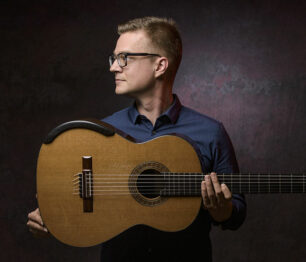« Il faut brûler les maisons d’opéra », disait le premier (Pierre Boulez, 1967). « La musique contemporaine française s’est éloignée de la cité et le manque d’intérêt du public donne l’impression que ce secteur est en état de mort cérébrale », arguait l’autre (Raphaël Cendo, 2022), s’en prenant à l’hégémonie du premier. Quant à Jolivet, Boulez fustige son « esthétique des fétiches ». Depuis Rousseau, la musique française aime la polémique et cultive les querelles. Ces trois compositeurs ont pourtant une référence en commun : Antonin Arthaud, dont Le Théâtre de la cruauté les fascine à plus d’un titre.
Jolivet ou la musique et la magie
Autodidacte avant de rencontrer Paul Le Flem puis Edgar Varèse, André Jolivet participe à la création du groupe Jeune France (1936) avec Yves Baudrier, Daniel-Lesur et Olivier Messiaen. Il est alors le plus aventureux des quatre, celui qui, dans le cadre d’un primitivisme musical inspiré par Bergson et Durkheim tout autant que par l’Exposition coloniale de 1931, développe un langage musical original puisant à la fois au dodécaphonisme de Schönberg et aux éléments acoustiques transmis par Varèse.
Composée après le départ de Varèse aux États-Unis en 1933, Mana s’inspire de six objets hétérogènes qu’il a donnés à Jolivet : deux sculptures contemporaines de Calder, un pantin acheté aux puces, deux animaux en rafia (dont Pégase) et une poupée d’origine balinaise (La Princesse de Bali). Quant au mana, « cette force qui nous prolonge dans nos fétiches familiers », écrit le compositeur en exergue de la partition, il se réfère à la culture mélanésienne.
« La Princesse de Bali » est la pièce qui se rapproche le plus d’une musique extra-européenne. Jolivet organise la musique en strates, comme le gamelan. Tout s’achève sur une note : « comme un gong très grave ». « Pégase » affiche un contraste saisissant entre la petite figurine de rafia et le cheval mythique auquel le titre se réfère. C’est la pièce la plus développée et la plus classique du recueil par son organisation autour de trois thèmes.
Composées à l’été 1936, les Cinq Incantations pour flûte seule affirment le pouvoir magique de la musique présente aux moments-clés de la vie sociale et spirituelle, tout en renouvelant l’écriture de la flûte. Pièces purement mélodiques, elles vivent de la répétition littérale ou variée des motifs, destinée à produire une forme de transe.
Ravel et le dépouillement
En 1920, Henry Prunières décide de commander pour la Revue musicale une œuvre collective à la mémoire de Debussy. Dix compositeurs participent, dont Stravinsky avec un choral des Symphonies d’instruments à vent et Ravel, avec le premier mouvement de sa future Sonate pour piano et violon. Rarement Ravel se sera tant approché de Stravinsky par la clarté des lignes et l’usage d’ostinatos. Cette sonate ciselée a donné du fil à retordre à son auteur qui, début février 1922, juge le scherzo « moche » et le refait. « Ça n’a l’air de rien, cette machine pour deux instruments, confie-t-il : il y a près d’un an et demi de boulot là-dedans. »
Dans son autobiographie, Ravel reconnaîtra la spécificité de sa sonate : « Le dépouillement y est poussé à l’extrême. Renoncement au charme harmonique ; réaction de plus en plus marquée dans le sens de la mélodie. » Boulez confirme : « ce que Ravel possède en propre, c’est le génie du contour, qui fait qu’on ne peut oublier ses thèmes. »
Cendo et la saturation
Aux antipodes de l’esthétique ravélienne, la musique de Raphaël Cendo relève du courant saturationniste né dans les années 2000 en France. L’idée de saturation voisine avec celle d’excès pour un musicien reconnaissant la filiation de deux compositeurs : Gérard Grisey et Iannis Xenakis. Partant de la saturation instrumentale, Cendo a élargi la notion à la densité, à la saturation granulaire, et jusqu’à la saturation historique qui, selon lui, « accueille à l’excès l’histoire [musicale] de l’humanité ».
Rokh I – premier mouvement de l’œuvre en quatre parties, Rokh (2011-2012) – doit son titre à une figure mythologique : un « oiseau gigantesque et fabuleux dont parlent les Mille et une nuits, il est le symbole du renouveau et de l’immortalité. » On note son effectif classique : celui d’un quatuor avec flûte et piano. Mais la flûte se double de la flûte basse et les modes de jeu du piano sont très diversifiés. « Cette première partie alterne des moments de totale saturation et des états plus infimes, statiques ou bruissés. Les éléments se démultiplient, engendrant une matière sonore très dense et mouvementée. L’extrême écriture gestuelle et l’énergie demandée confèren( à ce mouvement un caractère imprévu et incontrôlé. »
Coffin Bubble Blue (2020-2021) est né de la rencontre de Raphaël Cendo et de compositrices venues de Lituanie, de Turquie et des Philippines – autour de la guitare électrique et d’un interprète hors norme, Yaron Deutsch. On pourrait le qualifier de concerto pour guitare électrique, mais avec un ensemble très particulier, mêlant instruments occidentaux modernes (flûte contrebasse, harpe, accordéon, clavier et synthétiseur modulaire), instrument ancien (le théorbe) mais aussi populaire (le cymbalum) et non-européen (le sheng, orgue à bouche chinois). Si l’on ajoute que le sous-titre de la pièce – Tell el-Amarna 1988 – se réfère à un site de la Moyenne-Égypte du XIVe siècle av. J.-C., on se dit qu’une forme de saturation historique et culturelle imprègne cette œuvre.
Lucie Kayas






